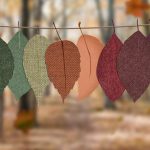Looking to add a burst of sunshine to your wardrobe? Dyeing your shirt yellow is like infusing a ray of sunlight into your style. In this guide, you'll discover five straightforward methods to achieve the vibrant yellow hue you desire.
Whether you prefer natural dyes, tie-dye techniques, dip dyeing, sun-activated processes, or fabric paint and spray dyeing, you'll find the perfect method to create your custom yellow masterpiece.
With these easy-to-follow techniques, you can confidently transform any plain shirt into a cheerful, eye-catching garment.
So, let's dive into the world of yellow dyeing and elevate your shirt game with these simple yet effective methods.
Key Takeaways
- Natural dyeing methods such as onion skin dyeing, turmeric dyeing, flower petal dyeing, and spice powder dyeing provide eco-friendly alternatives to chemical dyes.
- Tie-dye techniques like spiral patterns and color blending can create vibrant yellow patterns on shirts.
- Dip dyeing allows for creating a gradient effect by submerging the bottom part of the shirt in diluted yellow dye.
- Sun-activated dyeing helps set the yellow color by placing the dyed shirt in direct sunlight.
Natural Dyeing Methods
If you want to dye your shirt yellow using natural methods, you can easily achieve this by using ingredients commonly found in your kitchen. Onion skin dyeing and turmeric dyeing are two effective ways to achieve a lovely yellow hue.
To use onion skins, simmer them in water for about an hour, then strain the liquid and soak the fabric in it. The longer you leave the fabric in the dye, the deeper the color will be. Turmeric dyeing involves boiling water, adding turmeric, and simmering the fabric in the mixture for an hour. Both methods require rinsing and drying the fabric thoroughly after dyeing.
Another way to dye your shirt yellow is by using flower petals or spice powder. Marigold, chamomile, or dandelion flowers can be boiled to create a vibrant yellow dye. After straining out the petals, the fabric can be soaked in the liquid. Similarly, spices like saffron or curry powder can be boiled to create a rich yellow dye.
Once the fabric is dyed, it needs to be rinsed and dried properly. These natural dyeing methods provide a great alternative to chemical dyes and allow you to create beautiful, eco-friendly yellow shirts right at home.
Tie-Dye Techniques
Explore tie-dye techniques to create vibrant yellow patterns on your shirt using simple and fun methods.
To achieve spiral patterns, lay the shirt flat and pinch the center, then twist it into a spiral shape. Secure with rubber bands to create segments for dyeing.
For color blending, mix different shades of yellow dye in separate containers, then apply them to different sections of the shirt for a dynamic effect.
Start by saturating the shirt with water to help the dye spread evenly. Next, apply the dye to each section, ensuring full coverage. Allow the dye to set for the recommended time according to the dye instructions.
Afterward, rinse the shirt under cold water until the water runs clear, then remove the rubber bands and wash the shirt separately.
Once dry, you'll reveal a striking yellow tie-dye masterpiece with spiral patterns and captivating color blends.
With these simple yet effective techniques, you can effortlessly transform your shirt into a stunning piece of wearable art.
Dip Dyeing Process
To achieve a gradient effect of yellow on your shirt, start by submerging the bottom portion of the shirt into a container of diluted yellow dye. Gradually lift the shirt out of the dye, allowing more of the fabric to be exposed to the dye as you go. This will create a beautiful transition from white to yellow, achieving the gradient effect. Here is a simple table to guide you through the dip dyeing process:
| Steps | Instructions |
|---|---|
| 1 | Prepare the dye according to the package instructions. |
| 2 | Fill a container with the diluted yellow dye. |
| 3 | Dip the bottom part of the shirt into the dye. |
| 4 | Gradually lift the shirt out of the dye, exposing more fabric. |
| 5 | Rinse the shirt with cold water and let it dry. |
Sun-Activated Dyeing
Consider placing your shirt in direct sunlight after dyeing to activate and set the yellow color. Sun exposure plays a crucial role in the color-changing process, enhancing the vibrancy of the dye.
Here's a step-by-step guide for sun-activated dyeing:
- After dyeing your shirt using a natural yellow dye, gently squeeze out any excess liquid without wringing the fabric.
- Lay the dyed shirt flat on a clean surface, ensuring that it's evenly spread out to allow for uniform sun exposure.
- Place the shirt in direct sunlight for approximately 1-2 hours, turning it over halfway through to ensure both sides receive equal sun exposure.
- Once the shirt has achieved the desired color intensity, remove it from the sunlight and wash it gently with cold water to remove any residual dye. Allow it to air dry.
Fabric Paint and Spray Dyeing
After sun-activating your yellow-dyed shirt, enhance its vibrancy further by using fabric paint or spray dye to create unique patterns and designs. Fabric paint allows for precise control over the application of color, making it ideal for stencil application, while spray dye offers a more fluid and blended approach, perfect for color blending. Both methods provide an opportunity to unleash your creativity and add a personal touch to your yellow shirt.
| Fabric Paint | Spray Dye |
|---|---|
| Ideal for stencil application | Great for color blending |
| Offers precise control over designs | Provides a fluid and blended approach |
| Can create intricate patterns | Allows for a more organic and freeform design |
| Comes in a variety of colors | Available in a wide range of hues |
| Dries quickly and is washable | Requires minimal drying time and is permanent when set |
Whether you prefer the precision of stencil application with fabric paint or the fluidity of color blending with spray dye, both methods offer endless possibilities for transforming your yellow-dyed shirt into a one-of-a-kind piece of wearable art.
Frequently Asked Questions
How Do I Remove Yellow Dye From My Shirt if I Don't Like the Color?
If you don't like the yellow dye on your shirt, you can try removing stains with a color correction process. First, mix a solution of water, vinegar, and dish soap. Soak the shirt, then wash it as usual.
Can I Use the Same Dyeing Methods to Dye Other Clothing Items Like Jeans or Socks?
Yes, you can use similar dyeing methods for denim and socks, but different fabrics may require different techniques. When dyeing denim, consider using a denim-specific dye. Socks may require a different dyeing process due to their material.
What Kind of Fabric Is Best for Yellow Dyeing?
For the best fabric choice when dyeing yellow naturally, opt for natural fibers like cotton, linen, or silk. These materials absorb color well and result in vibrant hues. Choose a fabric that complements the dyeing process for best results.
Are There Any Special Care Instructions for Clothing Dyed With Natural Dyes?
For clothing dyed with natural dyes, special care is needed. Always follow fabric-specific care instructions. Avoid harsh detergents or bleaches. If needed, use color-safe alternatives. Hand wash or use gentle cycles to preserve the dye.
Can I Mix Different Dyeing Methods to Create a Unique Yellow Shirt Design?
Yes, you can mix different dyeing methods to create a unique yellow shirt design. Experimenting with color mixing techniques can result in a one-of-a-kind shirt. It's important to test on a small area first.





